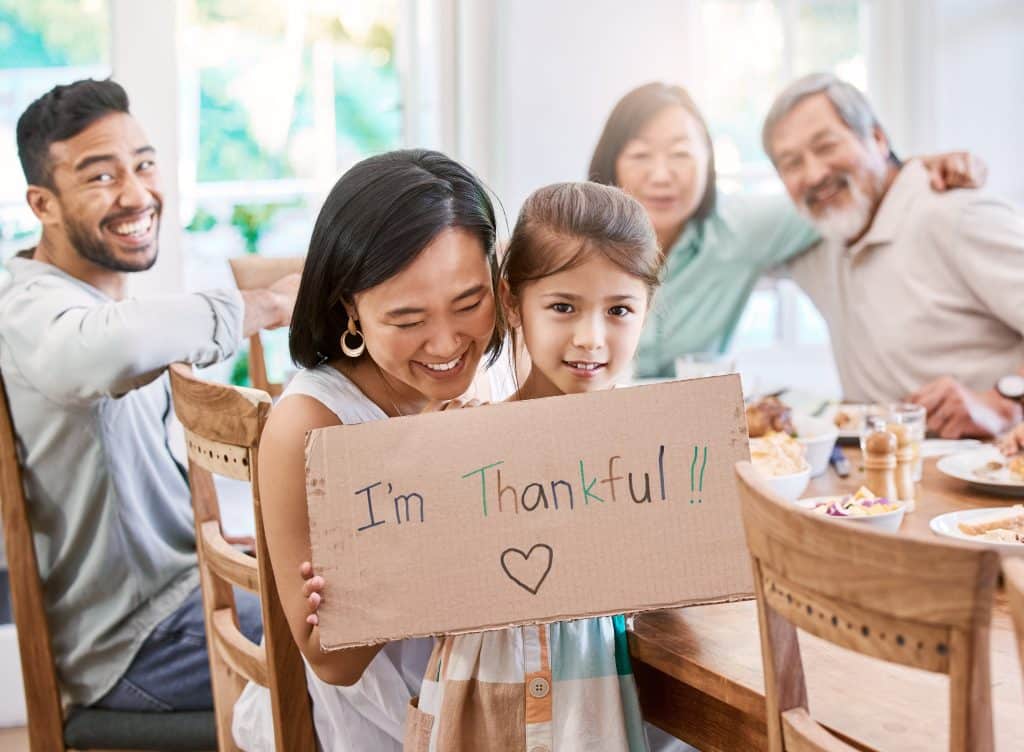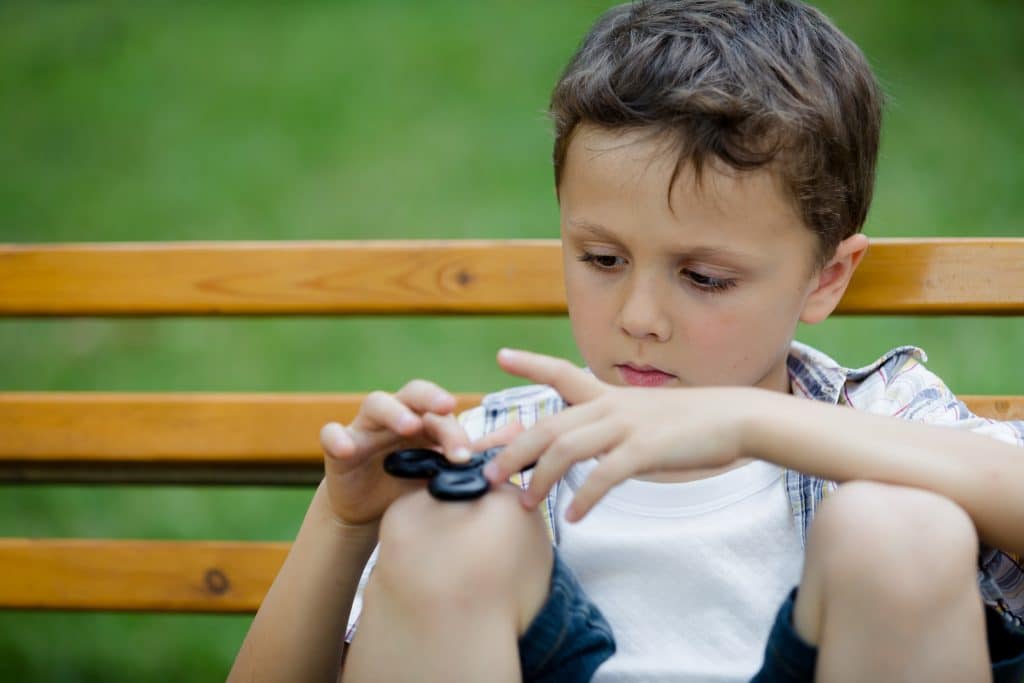Gratitude. It’s one of those virtues we all want to instill in our kids, but let’s be real – it come with it’s own dose of frustration. I’m sure we have all been there, seeing our children having some amazing opportunities or things we couldn’t even have dreamt of as a child, but their reaction seems ambivilent.
But don’t worry, there’s hope! While this situation can be frustrating in the moment, the effort to cultivate gratitude is well worth it. By consistently expressing gratitude ourselves, we can begin to teach children the true value of appreciation.

Long term, raising grateful children pays off big time. Grateful kids tend to be happier, more compassionate, and more resilient. Research has shown that practicing gratitude can significantly improve mental health and overall well-being.
So, let’s explore some simple, actionable ways to weave gratitude into your family’s daily life.

Model Gratitude in Your Own Words and Actions
Children learn by watching us. If we want them to be grateful, we need to lead by example. It is the best way to teach children.
Let Your Kids Hear You Say Thank You
It’s the little things that count. Whether you’re thanking the cashier at the grocery store or your partner for making dinner, let your kids hear you express gratitude. This shows them that gratitude is a part of everyday life.
Consistently showing gratitude in our daily interactions teaches kids the importance of expressing gratitude genuinely.
Express Appreciation for People Who Help You
Go beyond the basics. Talk about how the mail carrier brightens your day or how the teacher works hard to make school fun. Expressing appreciation for those around you helps kids see the value in every person’s contribution.
Teaching kids to express gratitude for the efforts of others fosters a sense of community and empathy.

Share Things You’re Grateful For
Take a moment to marvel at a beautiful sunset or the smell of fresh coffee. Sharing these small joys with your kids can teach them to appreciate the world around them.
Incorporating a family gratitude practice, like sharing what you’re thankful for at the dinner table, can strengthen family bonds.
Use a Gratitude Journal
A gratitude journal is a fantastic way to make thankfulness a regular practice. Plus, we have a free printable gratitude journal to get you started!
Have Kids Write Down Things They’re Grateful For
Encourage your kids to jot down a few things they’re grateful for each day or week. It doesn’t have to be complicated – even simple things like “playing with my friend” or “eating ice cream” work.
This gratitude practice helps children focus on the positive aspects of their lives.
Turn It into a Routine
Incorporate it into your daily routine, like saying blessings before dinner. Make it a habit, and soon enough, it will become second nature.
Having a consistent gratitude practice, such as a gratitude jar where everyone adds a note each week, can be a fun family activity.

Make It Interactive
For younger kids, make it fun by having them draw pictures of what they’re grateful for. This way, they can express their gratitude creatively.
Encourage them to use different colors to make their gratitude journal vibrant and engaging.
Give Back to Others
Helping others is a powerful way to teach gratitude.
Encourage Acts of Service
Get your kids involved in acts of service, whether it’s helping a sibling with homework or cleaning up the local park. This shows them the joy of giving back.
Teaching kids to show gratitude through actions can leave a lasting impact on their character.
Volunteer Together
Spend a day volunteering at a food bank or animal shelter. These experiences can be eye-opening and teach kids the importance of community and compassion.
Family gratitude activities, like volunteering, can create lasting memories and reinforce the value of service.

Donate Old Toys and Clothes
Go through their old toys and clothes together and donate them to those in need. This helps kids understand the value of sharing and decluttering.
Teaching children to be grateful for what they have often starts with understanding the needs of others.
Limit Gifts and Treats
In our materialistic world, it’s easy to go overboard with gifts. But less is more when it comes to teaching gratitude.
Avoid Showering Kids with Too Many Material Things
Too many gifts can make kids expect them all the time. Instead, focus on giving thoughtful, meaningful presents. This approach helps teach kids to appreciate the gifts they do receive.
Set Clear Gift-Giving Occasions
Establish clear occasions for gifts, like birthdays and holidays, rather than giving whenever they ask. This makes receiving gifts more special.
Having set times for gift-giving can help children learn patience and appreciation.

Focus on Non-Material Experiences
Instead of another toy, plan a special outing or activity. Experiences create lasting memories and teach kids to value moments over things.
These experiences can be great opportunities to practice gratitude as a family.
Model Taking Care of Belongings
When kids learn to take care of their belongings, they appreciate them more.
Teach Them to Value Possessions
Show them how to care for their toys, clothes, and other items. This can be as simple as putting things back where they belong.
Teaching kids to show gratitude by taking care of their things instills a sense of responsibility.

Fix or Repurpose Broken Items
Instead of throwing away broken items, fix them or find new uses for them. This teaches kids to be resourceful and to value what they have. This practice also promotes sustainability and creativity.
The Long Game of Gratitude
Instilling gratitude in kids isn’t an overnight task – it takes time and patience. But it’s important and worth it. By modeling thankfulness yourself, you’re helping shape your children into appreciative, compassionate people. Make it a daily practice, and watch as your family grows closer and more grateful together.
Teaching kids gratitude is a journey that pays off with happier, more fulfilled lives.
More Parenting Resources
- Setting Boundaries in Gentle Parenting
- 6 Gentle Parenting Alternatives to Time Out
- 15 Signs You Might Be a Crunchy Mom
- Effective Emotional Regulation Games for Young Kids
If you found this guide helpful, please share it with other parents in your community. Together, we can all work towards raising a generation of grateful, compassionate kids!

As a grandparent, I’m always looking for ways to instill values like gratitude in my grandkids. I love the idea of incorporating daily gratitude practices.
Gratitude is the anecdote to entitlement, which seems to be on the rise!